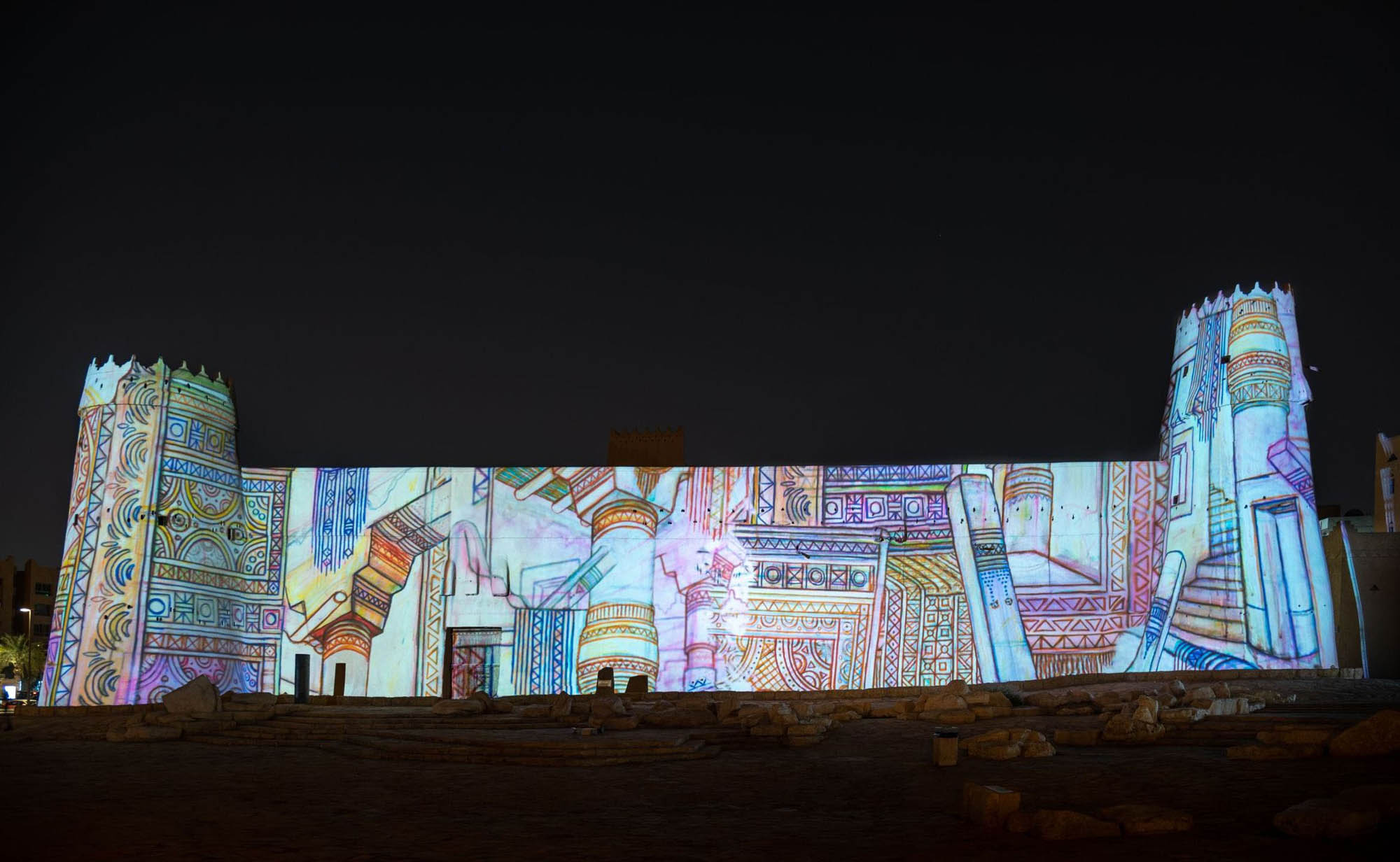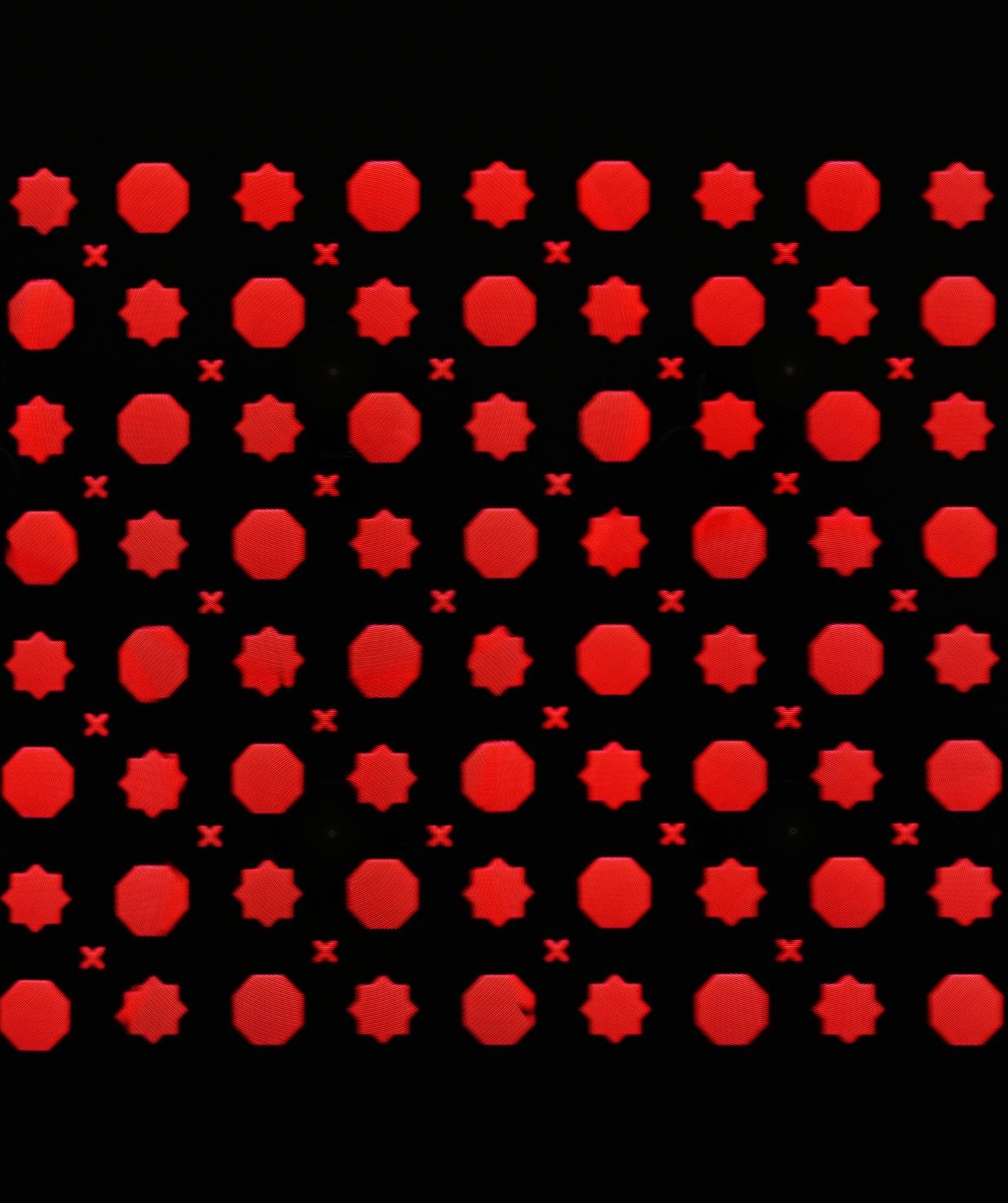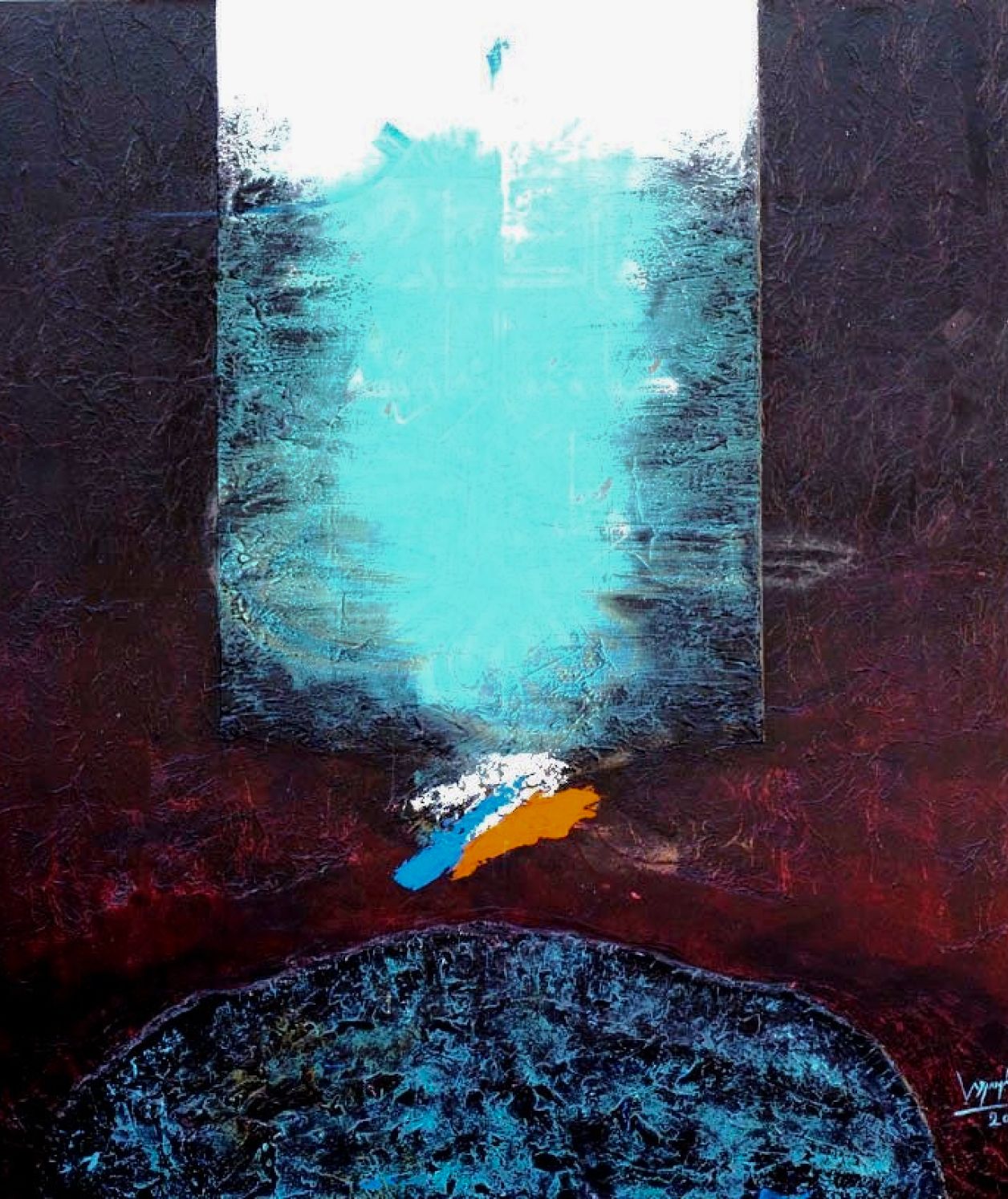Divine Light
Panel Syria, probably Damascus, ca. 1575 Fritware, underglaze-painted
H. 123 cm, W. 62 cm The Aga Khan Museum, AKM585
The light of the Divine is often evoked in the arts and architecture of the Muslim world past and present. On this beautiful, 16th-century tile panel, assumed to once have adorned a religious building in Damascus, Syria, a whole host of symbolic references come together to celebrate this theme while reminding believers of the very core of their Islamic faith. Suspended by chains within a tall arch supported by columns, a majestic blue lamp first catches our attention. Often found as an actual lighting device in mosques and even mihrabs or prayer niches, here the lamp clearly alludes to the famous light verse in the Holy Qur’an, the ayat al-nur (Q24:35), which states that "God is the Light of the heavens and the earth. His light may be compared to a niche that enshrines a lamp." To further strengthen its symbolic connection to God Himself and the faith,
the lamp bears the shahada or Islamic profession of faith in bold white calligraphy: ‘There is no god but Allah, and Muhammad is the messenger of Allah’. Beneath the lamp, the close connection between Allah and his prophet (peace be upon him) is further emphasized through the presence of a set of symbolic footprints, the qadam sharif or na‘layn sharif, popular as a motif across the Muslim world since the 16th century to remind believers of the prophet’s (peace be upon him) preeminent, timeless role and ideal example as imam and leader of the Muslim community. Below, two candlesticks with their candles lit, again reinforce the presence and all-pervasiveness of light in this spiritual context, while perhaps also subtly hinting at the need for human enlightenment in wholeheartedly contemplating God’s will and living in accordance with the tenants of the faith.


